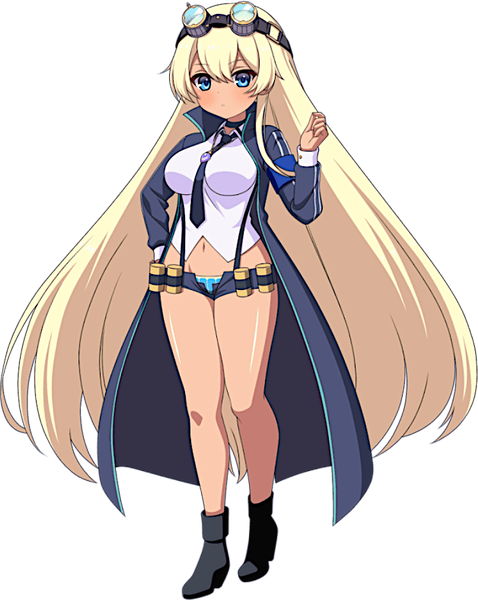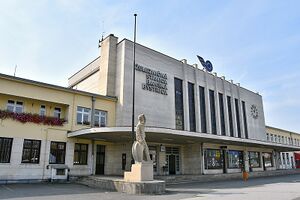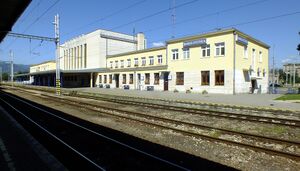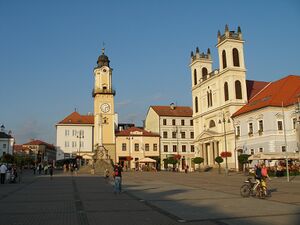Byst
| Byst | |||||
|---|---|---|---|---|---|
| Japanese Name | ビスト | ||||
| Weapon | |||||
| Race | Human | ||||
| Nationality | |||||
| Birthday | September 3 | ||||
| Constellation | Virgo | ||||
| Talents | Masonry, Other detailed work in general | ||||
| Likes | Jewellery, Hats, Clothing | ||||
| Dislikes | Swimming | ||||
| Strengths | Dextrous hands, Patient | ||||
| Weaknesses | Not good with honorifics and politeness | ||||
| Hobbies | Shopping | ||||
I am Byst. Like Stia, I come from the same Banská Mines. Unlike Stia though, I don't excavate very deep. My speciality is not digging, but carving. I'm more a gem sculptor. If there's something you want me to make, just let me know. I have confidence in my skills. My fees are steep, but I can make you something good.
Layers
| Icon | Title | Release Date | Where to Obtain |
|---|---|---|---|
| [Jeweler Oblivious to Love] Byst | 2023 March 8 | [Training Camp - Byst] Event Reward | |
| [Stylish Boss] Byst | 2023 March 1 | [Scarlet Tears and the Ore of Blessing] Event Reward | |
| [Job For Two Only] Byst | 2023 February 28 | [Scarlet Tears and the Ore of Blessing] Pick Up Gacha, Premium Gacha |
Skills
Trivia
- Byst's birthday is the opening date of Banská Bystrica railway station on 1873, together with the rest of the Zvolen–Banská Bystrica section of the Vrútky–Zvolen railway.
- Byst's job as a miner in the Banska mines references the real life counterpart of the Banská Štiavnica mines.
- Her dislike of swimming is likely a geographical reference, as Slovakia is landlocked. The town of Štiavnica is surrounded by ancient artificial mining water reservoirs called tajchy.
- Despite Byst's dislike of water, Byst is placed into the Flamarine faction due to the historical mines, which is also one of Flamarine's overall aesthetics and economy. Flamarine is the richest country in the Iris Cloud continent thanks to its access to the ocean, rainforest, and the mines in the desert.
Counterpart
Banská Bystrica railway station (Slovak: Železničná stanica Banská Bystrica) serves the city and municipality of Banská Bystrica, seat of the Banská Bystrica Region, central Slovakia. Opened in 1873, the station is a junction between the Vrútky–Zvolen railway and the Banská Bystrica–Červená Skala railway. The station is currently owned by Železnice Slovenskej republiky (ŽSR); train services are operated by Železničná spoločnosť Slovensko (ZSSK). Banská Bystrica railway station is situated at the southern end of 29. Augusta, on the edge of the city centre.
The station was opened on 3 September 1873, together with the rest of the Zvolen–Banská Bystrica section of the Vrútky–Zvolen railway. On 26 July 1884, the station became a through station, upon the inauguration of the Banská Bystrica–Brezno section of the Banská Bystrica–Červená Skala railway. It was not until 19 December 1940 that the Banská Bystrica–Dolná Štubňa section of the Vrútky–Zvolen railway was opened, thus completing the construction of that railway, and simultaneously transforming Banská Bystrica into a junction.
Since December 2015, the route Zvolen - Banská Bystrica - Žilina - Prague was joined by RegioJet, which operated one pair of direct connections on its northern route via Čadca, Ostrava and Olomouc to Prague. At the same time however, the direct connection via Púchov/Horní Lídeč operated by the state carrier was cancelled. Express trains Detvan and Fatra have been running from Košice since December 2015. The RegioJet connection was the only direct international connection from Banská Bystrica, but it ran to Žilina every two hours.
On 13 December 2015, RegioJet started operating the Prague - Žilina - Martin - Banská Bystrica - Zvolen line. Mobile ticket vendors were available at Banská Bystrica and Zvolen stations. However, on-board service was only from/to Martin. Wikipedia
Banská Bystrica is a middle-sized town in central Slovakia, located on the Hron River in a long and wide valley encircled by the mountain chains of the Low Tatras, the Veľká Fatra, and the Kremnica Mountains. With approximately 76000 inhabitants, Banská Bystrica is the sixth most populous municipality in Slovakia. The present-day town was founded by German settlers during the Middle Ages (as part of the Ostsiedlung), however it was built upon a former Slavic/Slovakian settlement.
The Slovak name Banská Bystrica includes two roots: the adjective Banská from Slovak baňa – mine, and the name of the local river Bystrica (from Slavic bystrica – swift stream). The name of the town in Hungarian: "Besztercebánya" also comes from the Beszterce stream (from the Slavic name of the stream, Bystrica), and the suffix bánya is connected to the mines of the town. The river lent its name to the town as early as 1255 when the Latin name Villa Nova Bystrice (meaning "New Town of Bystrica") was recorded in the document in which King Béla IV of Hungary granted the town royal privileges.
While Banská Bystrica's prosperity used to be derived from copper mining in the distant past, the most important sectors of the local economy are now tourism, timber, and mechanical industry. Two of the largest employers in Slovakia, Slovenská pošta (the public postal service, ranked as the 3rd largest employer) and Lesy SR (the national forest service, ranked as 13th). have their headquarters in Banská Bystrica. In the period 2007–2013, the city intends to work with Zvolen and other municipalities in the vicinity in order to jointly develop one of Slovakia's major metropolitan areas. The municipal strategy of economic development envisages Banská Bystrica as a regional center of tourism, services, administration, and entrepreneurship. The proclaimed three pillars of the future development are the natural and cultural heritage, information technologies, and infrastructure. Wikipedia
Map
Gallery
- Pages using Tabber parser tag
- Pages using DynamicPageList3 parser tag
- Weapon Axe
- Human
- Flamarine
- Virgo
- Element Cut
- Element Dark
- Element Fire
- Train Knights
- Slovakia












